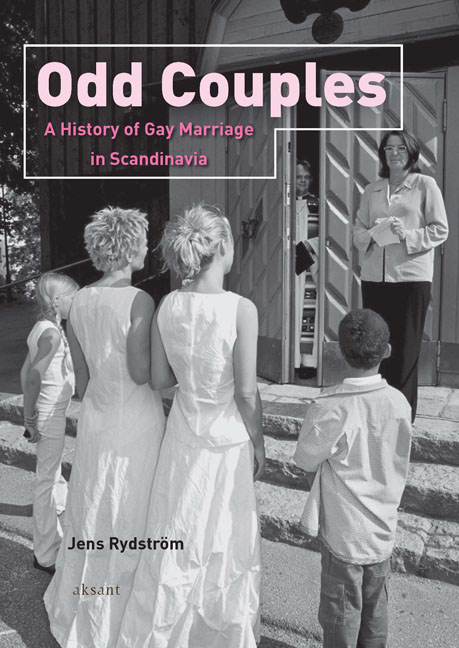Book contents
- Frontmatter
- Contents
- Preface
- Introduction
- Chapter One The Road to Registered Partnership
- Chapter Two Is Marriage what we want?
- Chapter Three Gay Marriage in Mainstream Politics
- Chapter Four Implementation
- Chapter Five Gender and Marriage Statistics
- Chapter Six The Next Step
- Summary and Conclusions
- Notes
- Appendix: Political Parties and Gay and Lesbian Rights Groups in Scandinavia
- References
- Index
Chapter Five - Gender and Marriage Statistics
Published online by Cambridge University Press: 20 January 2021
- Frontmatter
- Contents
- Preface
- Introduction
- Chapter One The Road to Registered Partnership
- Chapter Two Is Marriage what we want?
- Chapter Three Gay Marriage in Mainstream Politics
- Chapter Four Implementation
- Chapter Five Gender and Marriage Statistics
- Chapter Six The Next Step
- Summary and Conclusions
- Notes
- Appendix: Political Parties and Gay and Lesbian Rights Groups in Scandinavia
- References
- Index
Summary
When the law on registered partnership was first introduced in Denmark in 1989, international press coverage was extensive, and the pictures of the aging gay couple Axel and Eigil Axgil went all over the world. Axel Axgil was the founder of The Society of 1948 and he and his partner had worked for many decades for lesbian and gay rights in Denmark, so it seemed natural that they would be given the honour to be first. They had waited long, but now they were the first registered gay couple in the world and were celebrated by a huge crowd in Copenhagen's City Hall Square. The tone in the press was generally happy and generous, and many newspapers took the opportunity of congratulating all homosexuals for their victory. Some of the reports, however, showed some disappointment. After so much debate and confrontation, it turned out that relatively few persons took advantage of the new law. Moreover, very few women had their partnership registered. When the law became effective on 1 October 1989, eleven male couples registered in Copenhagen's City Hall, but there were no lesbian couples. According to the morning paper B.T., the Danish Gay and Lesbian Association LBL explained the absence of women by saying that they were “afraid of publicity” and were waiting till another day when there weren't so many journalists around. But the newspaper noted that lesbian interest in the law still seemed low after nearly two weeks. Here the journalist hit a sore spot within the Danish gay and lesbian movement. As we have seen in previous chapters, the law was a project mainly fought for by gay men, while there was strong resistance among lesbian feminists against a law that emulated heterosexual marriage. As has already been pointed out, this must be placed in the context of second-wave feminism in the 1970s, which saw the heterosexual nuclear family and marriage as the cornerstones of patriarchy. The dominating feminist discourse in the 1970s was built on various theories of patriarchy, and for most feminists gay marriage was an oxymoron. That was one of the reasons the chair of LBL, Else Slange, refused, when she was asked, to recruit lesbian couples for the first registration ceremony.
- Type
- Chapter
- Information
- Odd CouplesA History of Gay Marriage in Scandinavia, pp. 127 - 144Publisher: Amsterdam University PressPrint publication year: 2012



